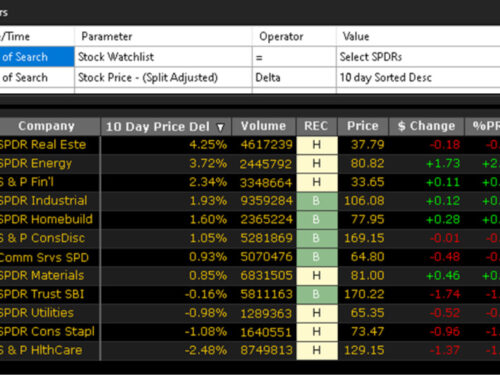Research has shown that investors are less likely to sell stocks at a loss than they are to sell stocks at a profit. Take the example of a 50% loss on a stock, you need to make 100% just to break-even. Why put yourself in that situation? If you are stopped out for a 10% loss for example, you would need to make 11% to get back to break-even.
If you sit behind your PC all day watching your stocks, you could argue that there is no need for a stop-loss since you can intervene quickly and act. I take it that most of us are not going to sit at our PCs all day? Even if you did, do you really know when you would get out? You may be so fatigued watching the market all day, every day that when the time comes to getting out, you may simply not have the conviction or strength left to act.
There are many arguments out there advocating that one should not use a stop-loss and that a buy and hold strategy is better and “time in the market” is better than “timing the market.” The commentary continues along the lines that by applying a stop-loss one gets stopped out only to have the share price move back up and all the stop-loss did was cause a loss. Furthermore, if we pick blue chip companies, then there is no need to sell out as these companies always power on in the longer term.
A buy, hold (and hope) type strategy is not what we promote at VectorVest. What if some of the blue chip stocks don’t go back up and are no longer blue chip stocks? How long do you want to wait for the stocks to recover? You don’t want to be left in a position waiting and hoping for a stock to come back in price to sell it. Think about the opportunity cost of time. You could be investing elsewhere and making returns on your hard-earned capital rather than waiting and hoping to recoup your capital. Big losses can erode confidence and, in turn, lead to further risky behaviour to try to recoup capital!
Preserving your capital is one of the key concepts of investing. Without your capital, you cannot invest. Yes, some stop-losses can cause you to whipsaw in and out of a trading plan, but I would rather be stopped out for a 5% gain or loss for example than be sitting on a 50% loss. Stop-losses, if done correctly, can be setup in such a way that you minimise your trades and maximise your profits. There can be an optimal balance struck based on the types of shares you are purchasing.
This is where BackTester becomes invaluable. The BackTester tool in VectorVest allows for us to BackTest our trading plans. One of the key variables in a trading plan (apart from Market Timing and stock selection) is the stop-losses applied. The power of BackTesting ascertains what stop-losses work best for the types of stocks and Market Timing system and other variables you are applying. To sit back and nominate a stop-loss to be applied for any portfolio is not optimal, but is better than not applying a stop-loss. However, it is best to see the results firsthand on what the actual impact has been in applying certain stop-losses. By doing our homework, we are in a better position to see what is likely in the future. The BackTester can help you optimise your stop-loss to strike the perfect balance between risk and reward versus effort.
A stop-loss is part of your overall risk money management.
There are a few other key risk money management pointers I will leave with you to consider too:
- Never Risk more than 1 to 2% of your investable capital per share*
- Never give back more than 50% of your gains once you have made a reasonable profit – we suggest around a 10% profit level
- Ensure that you are buying stocks with plenty of liquidity. Stocks with low liquidity can gap up or down quickly. Stocks with plenty of liquidity are less prone to gapping up and down throughout the day. As a rule, look for stocks averaging at least 50,000 trades or more a day.
- Remember that cash is a position too!
* For example: If you have $100,000 to invest and invest across 10 positions, then each position would be $10,000 to begin with. By applying a 10% stop-loss on each of the 10 positions, you will ensure no more than 1% of the total investable capital is lost per position. That being, 10% of $10,000 is $1,000. $1,000 of $100,000 is 1%.
Written by: Russell Markham










Very interested as I am a member of VV